Major X5.0 solar flare erupts from Region 3536 — the strongest flare of Solar Cycle 25
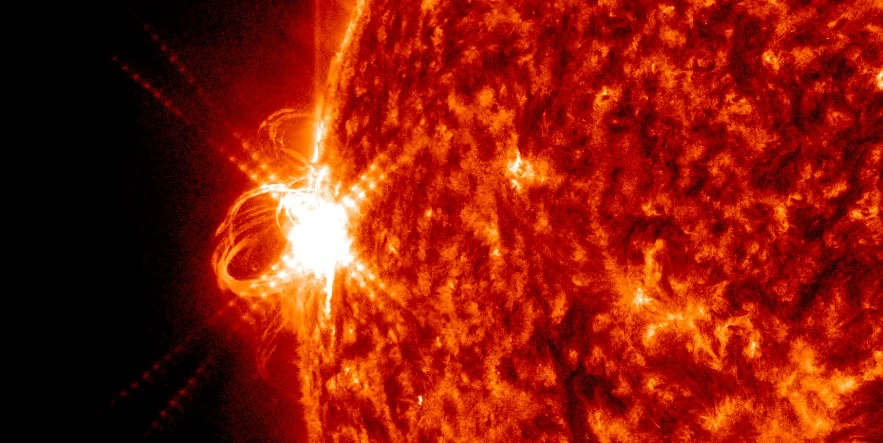
A major X5.0 solar flare erupted from Active Region 3536 at 21:55 UTC on December 31, 2023. The event started at 21:36 and ended at 22:08 UTC. This is now the strongest solar flare of the current solar cycle — Solar Cycle 25 — and the strongest flare since X9.3 on September 6, 2017.
A Type IV radio emission was associated with the event. Type IV emissions occur in association with major eruptions on the Sun and are typically associated with strong coronal mass ejections (CMEs) and solar radiation storms.
Additionally, the flare event was associated with a 10cm Radio Burst (tenflare) lasting 21 minutes and with a peak flux of 3 100 pfu. A 10cm radio burst indicates that the electromagnetic burst associated with a solar flare at the 10cm wavelength was double or greater than the initial 10cm radio background. This can be indicative of significant radio noise in association with a solar flare. This noise is generally short-lived but can cause interference for sensitive receivers including radar, GPS, and satellite communications.
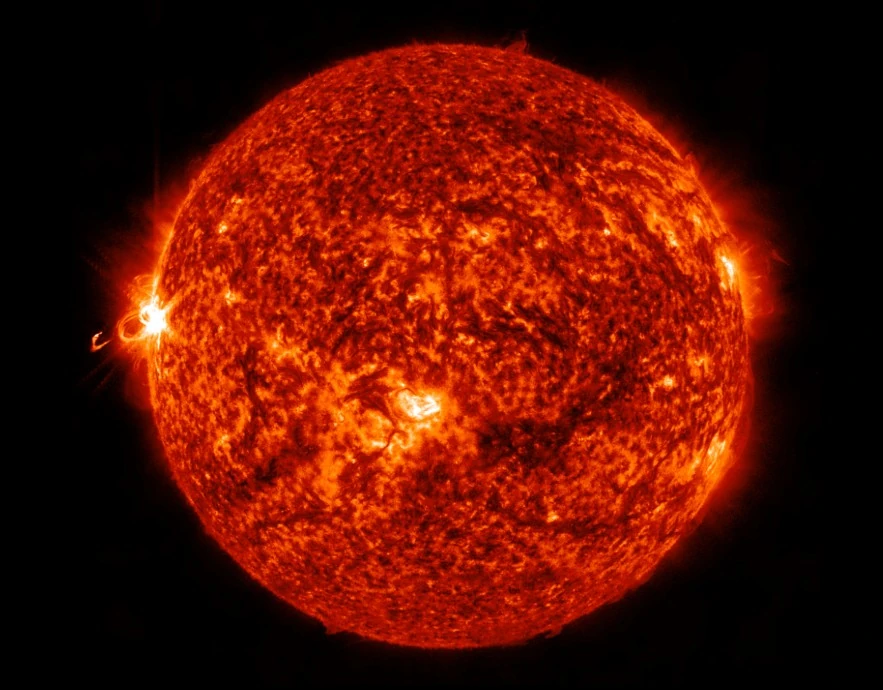
The location of this region does not favor Earth-directed CMEs, but this will change in the days ahead as it rotates toward the center of the disk.
This region was named 3514 during the last transit and was responsible for the X2.8 solar flare on December 14 — the strongest solar flare since September 2017 before today’s X5.0.
There is a small possibility that a part of the CME may reach Earth in a couple of days.
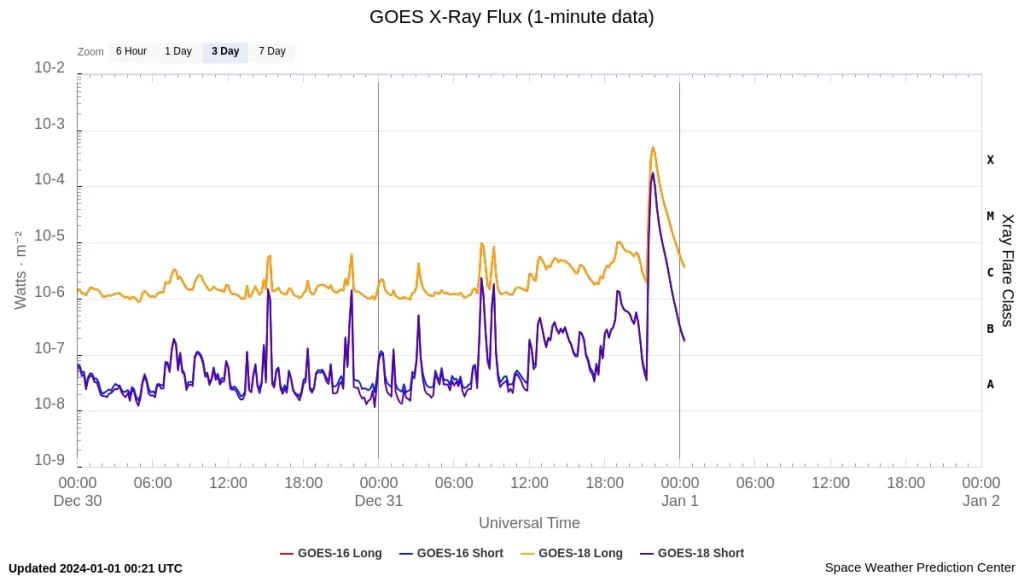
Radio frequencies were forecast to be most degraded over the Pacific Ocean at the time of the flare.
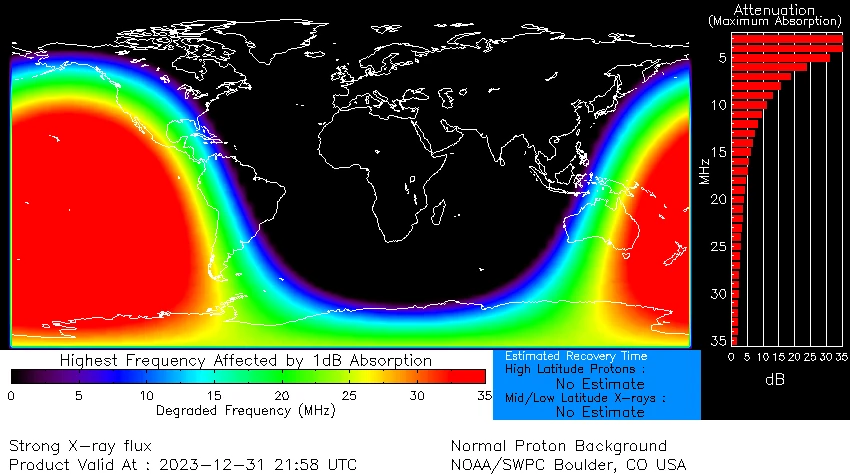
The explosion was powerful enough to produce a solar tsunami.
In addition to the X-flare, the newly numbered Region 3536 (N05E75, Hax/alpha) produced an M1.0 flare at 19:12 UTC on December 31.
Regions 3533 (N14W78, Bxo/beta) and 3534 (S13E03, Dao/beta) were seen to be in decay while Region 3531 (S20W77, Hsx/alpha) was stable over the past 24 hours.
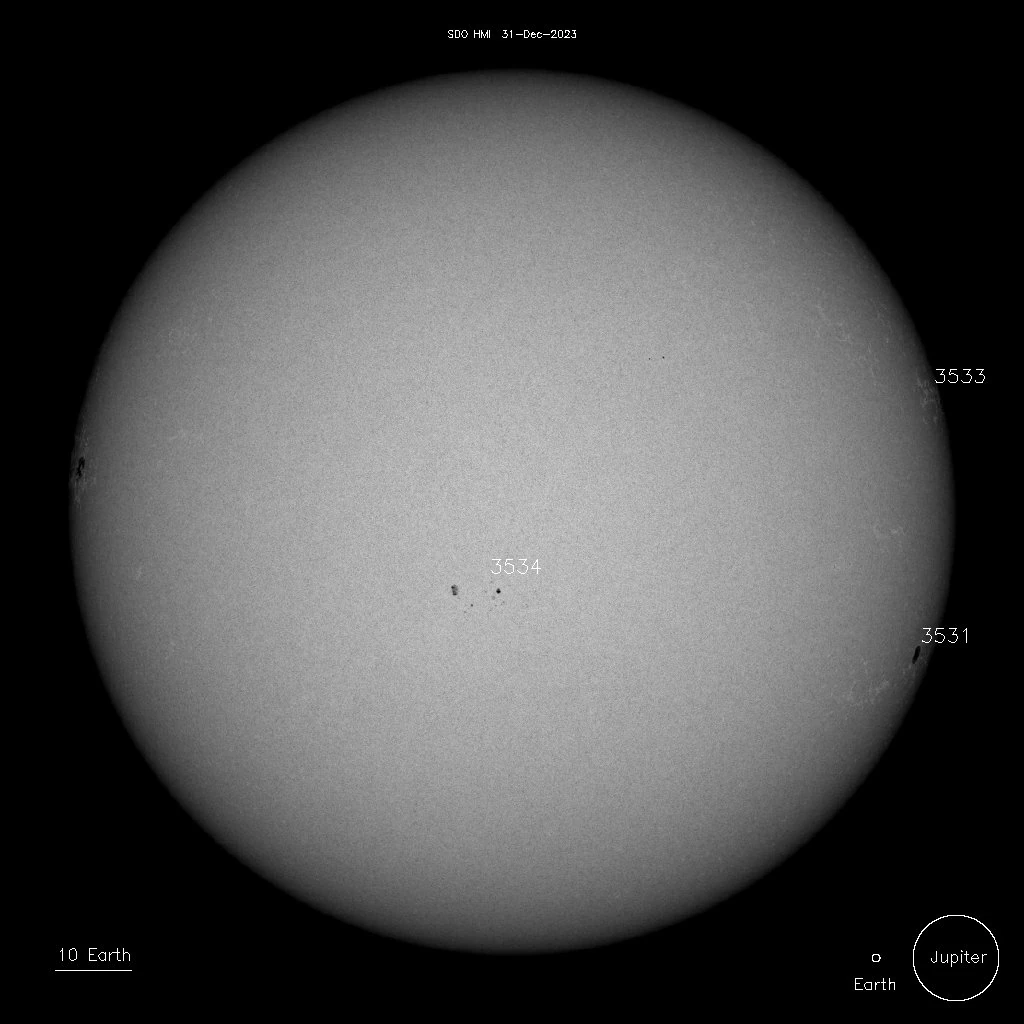
Three prominent filament eruptions were observed during the same period. The first filament eruption occurred in the vicinity of S40E65 at around 06:00 UTC on December 31, the second was near N38W50 at around 09:00 UTC, and the third was located near S52E68 at around 17:00 UTC.
Three CMEs associated with the filament eruptions have been analyzed and determined to be directed off the Sun-Earth line, SWPC forecasters said.
As of this report, LASCO satellite imagery had not been updated to include the X5.0 flare.
No Earth-directed CMEs were observed in available coronagraph imagery.
Solar activity is expected to be low with M-class flares likely, and a chance for X-class flares through January 3, particularly from new Region 3536.
Periods of active geomagnetic field conditions are expected on January 1 and 2, with quiet and unsettled levels expected on January 3, due to negative polarity coronal hole high speed stream (CH HSS) influences.
Updates
14:00 UTC, January 2
The partial halo CME that was associated with the X5.0 flare is expected to pass mostly behind Earth’s orbit, consistent with the source location of AR 3536 near the northeast limb. However, some effects are possible at Earth given the highly expansive nature of the eruption, and specifically, the shock.
Featured image: X5.0 solar flare on December 31, 2023. Credit: NASA/SDO AIA 304

Commenting rules and guidelines
We value the thoughts and opinions of our readers and welcome healthy discussions on our website. In order to maintain a respectful and positive community, we ask that all commenters follow these rules.